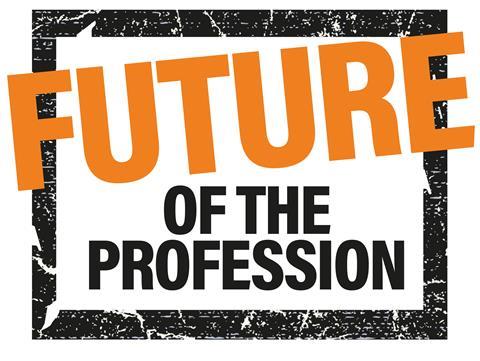If we really want to influence government policy we should move our money from the RIBA and our hopes from Labour, argues Ben Flatman

Almost every aspect of architectural practice is impacted by politics. The governing party’s policies on everything from housing and taxation to building regulation and employment law form much of the context for what we do and how we do it.
Yet we often seem to be merely passive bystanders to the power games played out at Westminster. It may or may not be coincidence that there isn’t currently a single registered architect in the House of Commons.
It wasn’t always like this. During the post-war period there was a general consensus between Tories and Labour that government had a critical role to play in providing housing and improving the quality of the wider built environment. As a result, architects were considered key to delivering a range of social goods and something like half of them worked directly for the public sector. For councils and civil service departments across the country, they churned out housing and schools, stations and hospitals. Prominent architectural figures like Leslie Martin and Hugh Casson also held senior posts in local government and academia and used their power to promote other architects to positions of influence.

This all changed after 1979. The 1980s saw the profession profoundly impacted by the Thatcher government’s ban on council housing and general aversion to the public sector. Within a short period of time many architects found themselves unemployed and having to adjust to a radically new world of work. It took a long time for the profession to stabilise and adapt.
In parallel with the ban on new council housing, Thatcher also forced councils to sell off their existing stock. The promotion of this “property owning democracy”, along with other innovations that flowed from the 1988 Housing Act, such as assured shorthold tenancies, which give greater rights to landlords, and buy-to-let mortgages, helped stoke the British obsession with property. A home began its transition away from being somewhere that people lived to becoming a financial commodity to be invested in, leveraged and traded. The private rented sector, which had seemed in terminal decline, rebounded massively.
As a consequence, many architects working on housing increasingly found themselves employed as design stylists on what had essentially become investment products. Prioritising developers’ profit margins over the needs of end users and the quality of the architecture became the norm for a lot of practices.
The New Labour era did briefly seem to offer the promise of a different approach. Richard Rogers courted (and was courted by) the Labour leadership of the time. By the late 1990s the profession seemed keen to fulfil a wider social function again. And the creation of Cabe, as well as programmes like Building Schools for the Future, suggested government might share this vision. The reality was perhaps more mixed, with the underlying commercial imperatives of Thatcherite economics going largely unquestioned, and the quality of new architecture maybe not quite as good as it seemed at the time.
In any case, the electoral successes of the Blair era now look increasingly like a blip in the otherwise inexorable slide towards Labour’s irrelevance. All but dead in Scotland, and in retreat across swathes of its northern English heartlands, it’s practically impossible to see how Labour can ever win a majority at Westminster on its own again. Which leads us back to the Conservative party.
The Tories in recent years have not appeared particularly sympathetic to architects. Michael Gove famously ditched Building Schools for the Future, partly justifying his decision with an attack on the alleged inflated fees paid to the architects. And the news this week that Michael Gove is to embark on yet another overhaul of planning policy underlines just how much our built environment appears to have become the plaything of Conversative cabinet ministers and their shadowy backers.
But perhaps architects (who tend to skew centre-left in elections) have been taking the wrong approach. Rather than hoping vainly for another Labour government that may or may not pay them any attention, or continuing to shout impotently at Conservative governments from the side-lines, maybe architects should just be going where the power is.
Conservative party membership is believed to have dropped as low as 70,000 in 2018. Meanwhile RIBA membership stands at about 30,000. Imagine the influence architects might bring to bear on the party of government with those numbers. Rather than handing over £400 a year to pay for the upkeep of Portland Place, perhaps it’s time for architects to economise and put their money to better use by investing in a £25 Tory membership? It might just buy some influence.
















9 Readers' comments